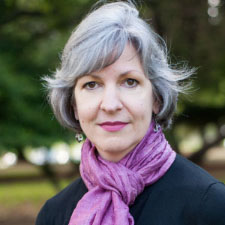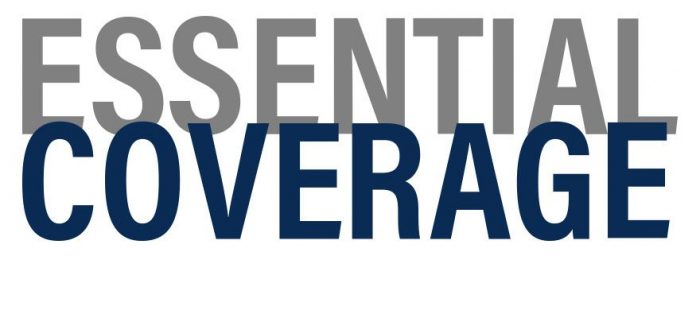Blog Insights
Q&A with California Health Care Foundation’s Sally Mudd
We’ve been speaking with partners and clients to learn about how they are adjusting their communications, programs, and digital services to the COVID-19 pandemic.

We recently spoke with Sally Mudd, Director of Engagement at the California Health Care Foundation (CHCF). Sally oversees digital, content, and audience engagement strategy to support and promote the organization and its individual program areas.
The California Health Care Foundation runs programs and makes grants of about $39M annually to support health systems in California “… advancing meaningful, measurable improvements in the way the healthcare delivery system provides care to the people of California, particularly those with low incomes and those whose needs are not well-served by the status quo.”
Some key takeaways from Sally:
- Telehealth: With the COVID-19 pandemic rising, CHCF quickly shifted to focus more of its funding resources on promoting telehealth, an area they had been working on for more than a decade.
- The CHCF blog/Essential Coverage newsletter: CHCF pivoted to tie news about COVID-19 with CHCF’s program work. With weekly emails and social media outreach, the newsletter, which also promotes all of CHCF’s blog posts, has become one of their most viewed information products.
- COVID-19 tracking poll: CHCF saw a need for timely information about how COVID-19 was affecting the state’s healthcare providers and residents and started a rapid weekly tracking poll, which has grown to be widely covered by news outlets.
- Weekly Huddle: Sally’s digital communications team meets weekly to assess the data of the prior week and to set new priorities—and to start working with their program teams to bring a digital-first approach to planning new investments.
- Post COVID-19: Sally expects her team to continue a more rapid-response approach to news and information and continue to push for early planning of digital products in program investments.
F1: How has COVID-19 changed CHCF’s focus?
Sally Mudd: When COVID-19 started to spread in the U.S., we had just finished setting our priorities and budget for the year. We knew that a lot of healthcare organizations would be heavily impacted as a result of COVID-19, and so we set out to see what we could do to help. We pulled together a COVID-19 team from across CHCF, and as a first step decided to provide funds to help our local community here in Alameda County and community-based organizations across the state.
Then we looked at where we might need to either double-down or pivot our strategy. One of the things we landed on was telehealth. As a result of COVID-19, people won’t be going into clinics either because they are scared or not allowed, so we saw a need to put more focus on telehealth, which is something that we have been working on for a while. We have worked with clinics and providers in California to find out exactly how we could be helpful to them in this area, and this has grown into working on how to better prepare them to provide care through telehealth.
F1: What are some new things you are doing at the communications level?
Sally Mudd: We wanted to highlight timely news, and so some time ago started the “Essential Coverage” column, which is a way to tie CHCF’s work to relevant stories in the current news cycle. Essential Coverage is part of our CHCF Blog newsletter and is featured on our homepage. We also send it out via email and on social media. It has markedly increased traffic to our site. In April, 35% of our total website traffic came through our blog. This tells us that our blogs are an effective way to be nimble, share salient points, and add to the story in a meaningful and, often, more human way.

We’re also trying to balance data and analysis with emotional content. One of the things we know well, but have seen reinforced, is that stories with a human face and emotional content in them do really well. Storytelling brings policy and other types of issues to a place where it is more meaningful. Readers won’t remember a statistic, but they will remember the one person who was representative of that data. We’ve had success with hiring journalists to develop stories for us, knowing that they will also find a human voice to explain a complex issue.
F1: Tell us about your new “tracking polls.” Why did you start collecting this data and how are you using the information?
Sally Mudd: We’ve been working, for more than a year, at several ways to get better at listening to consumers. It’s been a priority highlighted by our board as important to the value of our work. When COVID-19 arose, our program officers asked if we could help to learn “what is going on with consumers and providers during this pandemic?” This led to the COVID-19 tracking poll. This allows us to be nimble and responsive and a “myth-buster” about what is going on in California—a central role for us. Each week we define a key issue to explore, work with a global survey firm to conduct the polling, analyze the results, and publicly release the results—within a week. This kind of rapid-response work is a new muscle for us to flex, and very different from the reports and briefs we are known for.
F1: What else are you doing under COVID-19 to support the media covering health issues in California?
Sally Mudd: Right now, we are looking into how we can support ethnic and community media. We fund California Healthline, which is published for us by the Kaiser Family Foundation, to write original stories about the pandemic and its impact on the healthcare system. We have also been working to have them increase rural reporting because there is a real dearth of healthcare coverage in many parts of California. Media outlets are suffering right now as they are losing advertising dollars, and a lot of local stations don’t have a lot of extra resources to cover COVID-19. So we are giving some short-term media grants to help cover those costs.
F1: How do you and your team manage your fast-changing needs under COVID-19?
Sally Mudd: For a long time, we’ve had a regular Monday planning meeting and it still serves us well. We review the metrics from the prior week, assess what’s working, and plan out our priorities for the new week. We also use this time to determine what we will focus on in our weekly Essential Coverage blog post. We’ve also continued our prior efforts to be more methodical in taking a digital-first approach to publishing the outputs from program and research work— and our program colleagues see our success and are more and more interested in using these quicker-to-market formats.
F1: What new processes or efforts would you like to keep up after COVID-19 is over?
Sally Mudd: People have seen how it looks to get things out quickly, so I am hoping that we can keep that up somehow—looking for opportunities to use a “rapid response” approach when it makes sense. We also want to continue to get into discussions early on with our program colleagues to set schedules and budgets to provide for digital-first products.
